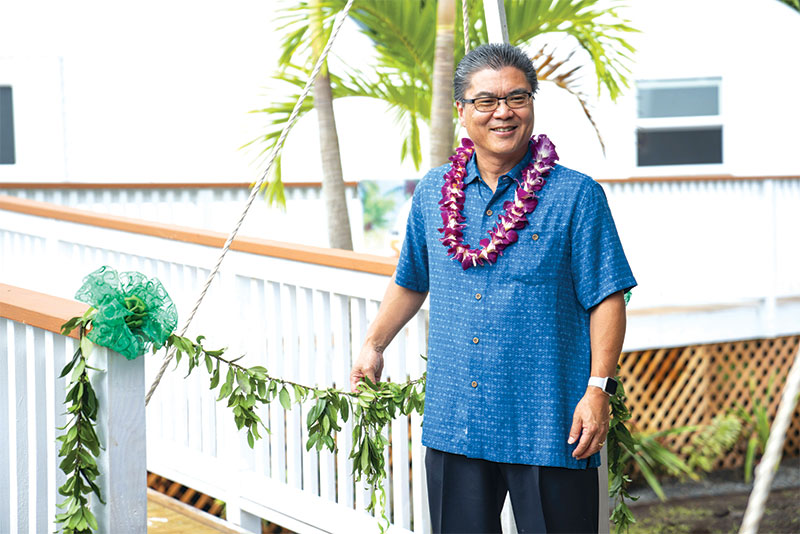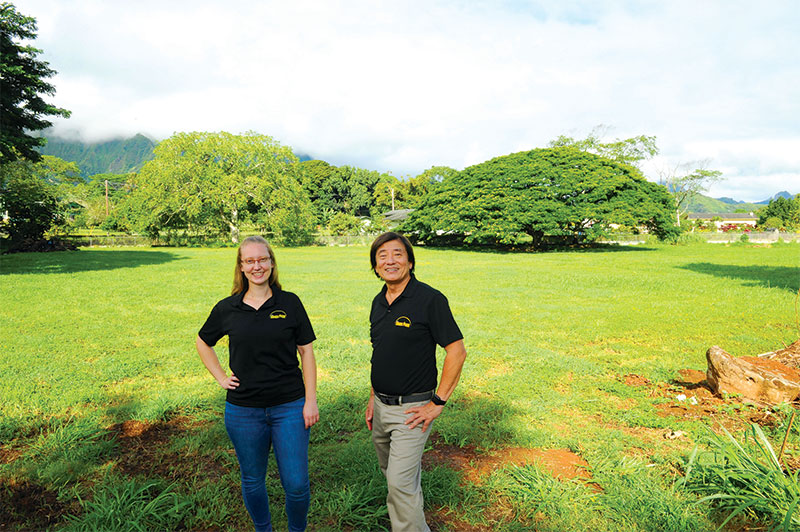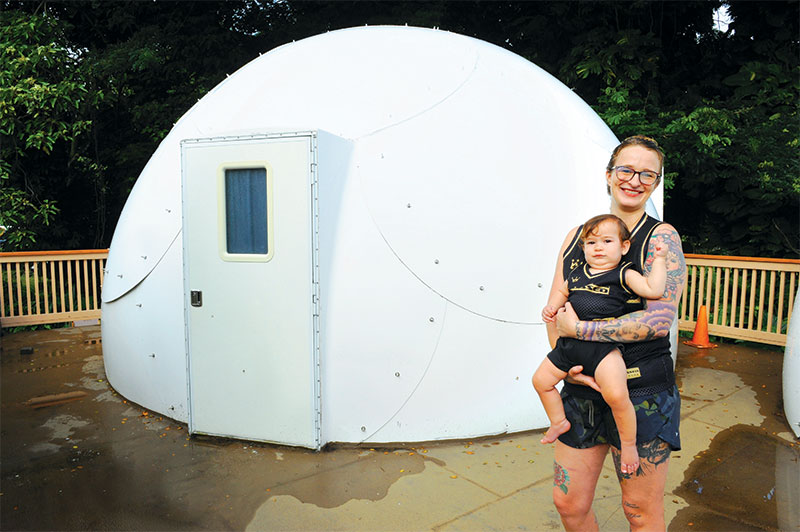Safe Haven
Led by executive director Daniel Kaneshiro, The Shelter is a welcome refuge for many homeless mothers looking for a home and a fresh start in life.
There’s a place in Kahalu‘u where homeless single mothers go to find a safe space to rest and a community to help them get back on their feet. It’s a place of second chances, a shelter in the time of storm.
Aptly named The Shelter, this place began as a church ministry of First Assembly of God at Red Hill in 2015, and has grown into a thriving transitional housing nonprofit that transforms lives. Thanks to years of collaboration between county, state, city and community members, The Shelter opened its 12 proverbial “dome doors” on the grounds of First Assembly of God Windward Church in Kahalu‘u in 2018. Since then, nearly three dozen homeless mothers and their children have experienced long-term, positive change.
For Stephanie Banks and her young son Jacob Hamilton, it’s a blessing that has turned into opportunities and a chance for a fresh start.

Pastor Klayton Ko, president of the board of directors with The Shelter, stands at the transitional housing community’s dedication ceremony in Kahalu‘u in 2018.
PHOTO COURTESY THE SHELTER
“God led me here,” says Banks, who’s been a resident at the Kahalu‘u site since September. “You gotta feel like the Lord is leading you and looking out for you when he brings you here. I’m so blessed to be here, and I am learning so much being here. I love living at The Shelter.”
While families who temporarily stay at The Shelter do indeed grow and thrive in the tight-knit community, the nonprofit measures its success by how many people leave to start new lives of their own. The Shelter staff — like program administrator Kaila Andrlik — works with city, state and HUD programs to help moms reach the milestone of finding permanent housing. But as a faith-based organization, it also aims to change hearts for the long haul, too.
“Housing will always come and go, but it’s the transformation of the heart that’s important,” explains executive director Daniel Kaneshiro. “It’s not about having a nice home, it’s the heart and character that we need to address to get to the core of homelessness. We want to help them become responsible citizens and parents, who don’t fall back into self-destructive behavior.
This is also why The Shelter is a no-drug, no-alcohol community, and all mothers that live there must be willing and able to work to support themselves and their young ones.
“We also teach them about spiritual values like forgiveness,” Kaneshiro adds. “We have moms reconcile with their own moms; reconcile broken relationships that caused their homelessness.”
To date, The Shelter has seen 18 families move into their own apartments, and four others reconcile with their families. And those numbers keep changing.
“A healthy stream flows, it’s not stagnant,” Kaneshiro continues. “Part of the success of the program is that there’s always moms moving in and out. It gives others an opportunity to experience the same help and stability.”
Families who stay at The Shelter live in one of nine structures on the property (the other three are reserved for restrooms and an on-site resident manager). These domes are like Hawai‘i-style igloos with 20 fiberglass panels layered over one another to create the exterior, and caulking between the gaps to keep the elements and bugs out. Each 12-foot-tall dome totals 314 square feet and measures 20 feet in diameter, making the living space more than accommodating, and mothers can decide how to configure the interior utilizing drywall dividers for privacy. (Communal restrooms and a kitchen area are located on the grounds, as well.)

Program administrator Kaila Andrlik and executive director Daniel Kaneshiro stand at the future gardening project site that will help The Shelter become self-sustaining.
“It’s a very architecturally sound design,” shares Kaneshiro. “It can withstand winds of up to 180 miles per hour.”
He likens the panels that make up each structure to stacklable Pringles potato chips — great for easy transport and construction/ deconstruction.
“When we brought our 12 domes to Kahalu‘u, it all came in one shipping container,” he recalls. “We can have two or three guys put up a dome in about two to three hours.”
Hawai‘i’s homeless situation extends beyond O‘ahu, and The Shelter’s model makes it a great solution for any community within the state — or even beyond — that has available land. Kaua‘i, for example, has an increasing problem with homelessness, and the community has been searching for solutions that benefit all.
“We have been following The Shelter project on O‘ahu for several years and are excited about its results,” says Darryl Kua, senior pastor at Garden Island-based West-side Christian Center Assembly of God. “Rather than reinventing the wheel, we have decided to partner with The Shelter and expand their model to benefit Kaua‘i.”
Now, the church is in the early stages of procuring a permit through its county to make The Shelter on the Garden Isle a reality.
And that’s the vision of The Shelter, to expand and help wherever it’s needed to support the state’s most vulnerable population: the keiki.
“To break the cycle of homelessness, you have to get the children off the streets,” says pastor Klayton Ko, president of the board of directors and founder of The Shelter concept. “My heart breaks when I think about the children who are battling the elements. I feel like it’s such a burden on these kids who just want to have a better life.”
CELEBRATE WITH THE SHELTER
After a successful couple of years at its Kahalu‘u location, The Shelter is looking to touch more lives. It invites the community to celebrate during a virtual fundraiser — “Hearts & Homes II: The Success Continues …” — slated for 7 p.m. Nov. 13.
“Now, the money we’re hoping to raise will help us with operations,” says executive director Daniel Kaneshiro. “We also have farmland right next to our Kahalu‘u property, and we’re working on a farm project so we can be self-sustaining.”
Monies will also go toward purchasing additional domes ($10,000-$12,000), as well as helping The Shelter expand its services to the Wai‘anae Coast.
“Hopefully there’s a potential site for us to multiply The Shelter’s concept where there’s an even greater need,” adds chairman of the board pastor Klayton Ko.
Michael W. Perry hosts the evening, and those who tune in will hear testimonies of moms who have successfully found permanent housing for themselves and their families, as well as a rap song from a teen at The Shelter.
“We asked for $21 a month in 2021, and we’re kicking off $22 a month in 2022,” says Kaneshiro, who also adds that corporate sponsors and church partners are welcome to lend a hand, too.
Learn how to donate and participate online at theshelter.org, or find the nonprofit on Facebook, YouTube and Instagram.





